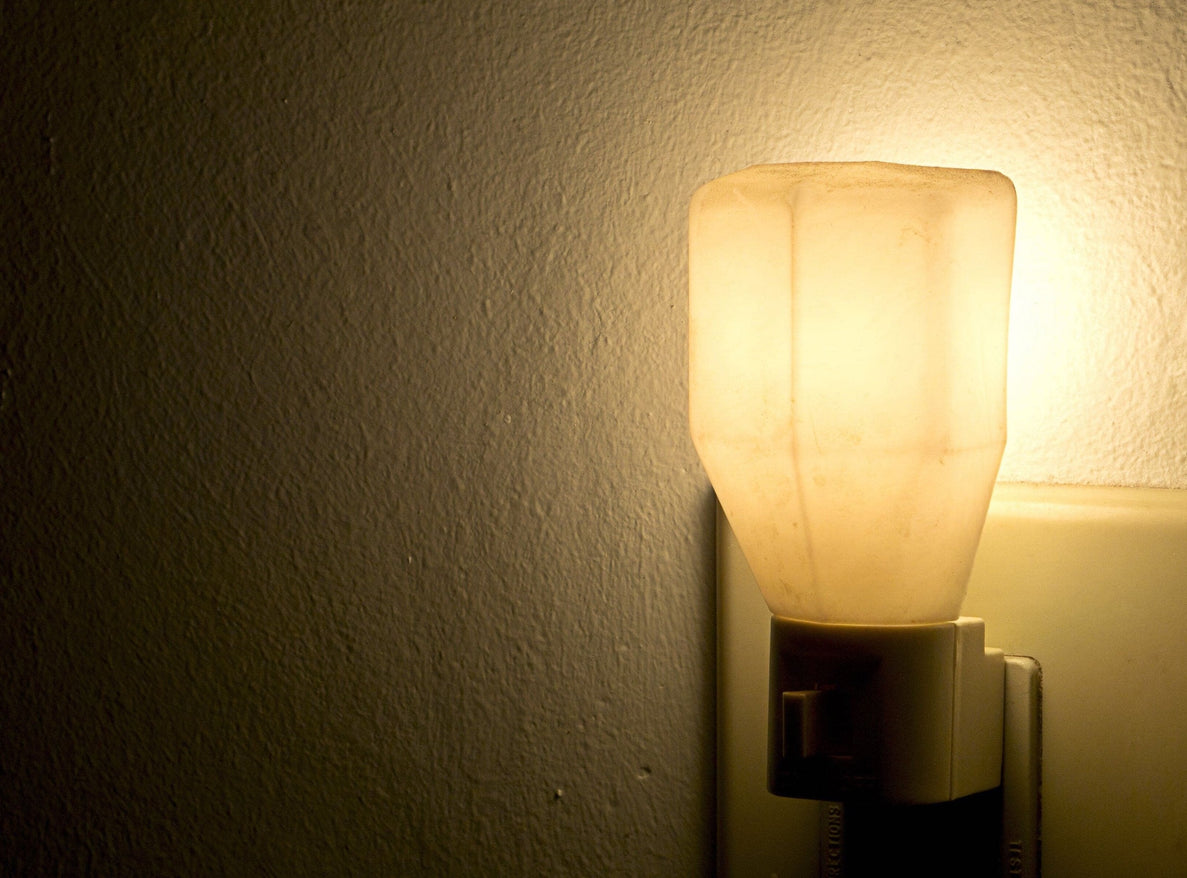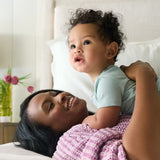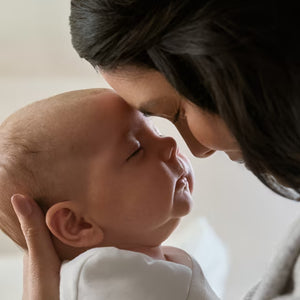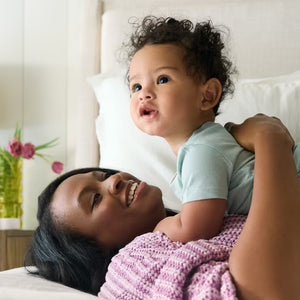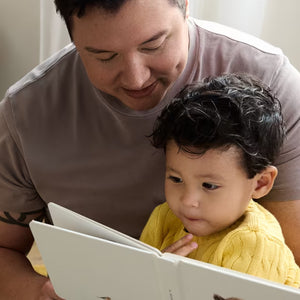So often, parents ask about incorporating night lights in the nursery. They're wondering when and how to use a night light. The truth is light and darkness play such a huge role in baby sleep. Let’s talk about it.
Should you use a night light in a baby's room?
Babies truly sleep best when a room is really dark. I know that some families worry their baby may be afraid of the dark, but I want to reassure you that these fears typically don't develop until age two or older. Night lights in the nursery aren’t necessary for baby sleep.
However, there are times when a night light in the nursery or the room that you share with your baby can be helpful. Night lights can be a great tool for night feedings, diaper changes, or other nighttime activities. If you choose to use a night light, consider a night light that has a very dim setting and the option to change the light color.
When should I introduce a night light to my baby?
There is no need to introduce a night light into your baby or toddler’s room before they ask for it. I usually like to wait until at least 2 years old before using a nightlight for sleep – if it’s needed at all. But if your toddler or preschooler is telling you they are afraid of the dark, this would be the time to introduce a night light. When introducing a night light, use the dimmest possible setting with the option for a red color light.
What is the best night light?
My favorite ones are those where you can dim the light and choose the light color. But, it doesn’t need to be fancy. Simply swapping out a light bulb in the room for a red bulb and using that for the times that you need a little light in the room can be a great option.
You can find my favorite night lights here.
What color night light is best for babies?
I recommend the color red for any night light. Research shows us that red light is the least disruptive to our body’s melatonin production.(1) Melatonin is the “sleepy hormone” that plays a large role in sleep and is highly dependent on light and darkness (2).
So while red light doesn’t necessarily help babies sleep, it’s the best choice when picking a night light color so that it doesn’t disrupt their sleep.
Expert Tip: Blue light is the most disruptive to sleep and significantly reduces melatonin production.(1) Because of this, electronics (they emit blue light) should be avoided for at least an hour before bedtime.
Should newborns ever sleep with the lights on?
I get this question all the time. Here’s what I think you’re seeing: Before 10 weeks, you probably noticed your newborn would fall asleep in the bright living room with no problem. Light doesn’t seem to keep newborns from sleeping. However, around 10-12 weeks you’re going to see a change: your baby will become so much more aware of her surroundings. This can make a bright room too stimulating for sleep.
Now, you don’t have to wait for things to be hard to make the room dark. You can start your baby napping in a dark room whenever you are ready, but if your baby is 10 weeks or older and napping is difficult, try a dark room!
Yes, you can offer naps in the dark even if your newborn is struggling with day-night confusion.
How dark should my baby's room be at night?
We want your baby’s room to be DARK at night. In fact, we want it so dark that you can’t see your hand in front of your face.
Do babies need to nap in the dark?
Babies are just like us; they sleep best in the dark. Why? Light is stimulating to your baby’s brain, while darkness promotes sleep. That means light is perfect for awake time, but darkness is best for nights and naps.
Even though darkness is best for sleep, you don't have to lock yourself in the house every time your baby needs to nap. Just know that when you’re out and about, baby naps may not be perfect. And that’s okay! My goal is for you to have a great little napper but ALSO the flexibility to thrive.
If your current sleeping setup is working for your family – it’s not super dark, and your baby is sleeping well – there is no need to change anything. But if you are dealing with short naps or early morning wakings, having a dark room can make a huge difference for sleep.
If you have concerns or questions about napping, dark rooms, and how this plays out at daycare, look at Daycare & Baby Sleep.
I don’t want my baby dependent on a dark room for naps. What should I do?
If you have a great sleeper who is sleeping through the night and can nap for over an hour, try adding some light into the room gradually. Think light that seeps under the door from the hallway or a bit of sunlight shining in around the curtains. If your baby or toddler continues napping well, you can try adding a bit more light. If short naps or early mornings creep in, you might need a dark room for a little longer.
But please know, you don’t HAVE to add in any light for sleep. Light truly stimulates the brain, and there’s no need to mess up a good thing if you don’t want to!
How do I make my baby’s room dark enough for sleep?
Let me tell you about the hand test. Close the curtains and blinds in the room, turn off the lights, and close the door. You want the room to be just like you have it when your baby sleeps. Give yourself a moment or two to let your eyes adjust. Next, put your hand in front of your face. Can you see your hand? If you can, your baby’s room may not be dark enough, and this could be the reason your baby is taking short naps or waking early in the morning.
There are several ways to make your baby’s room dark enough to pass the hand test. I’ve got a great video for you where I show you several products (use code Cara for 10% off) you can use to do this.
Don’t forget to look for light coming from electronics in the room. Here are a few to consider.
-
Are you using a night light in your baby’s nursery? Check to see how bright it is and consider unplugging it to eliminate the extra light.
-
Are you using a humidifier in your baby’s room? Check to see if there is a way to cover up the green “on” light or opt for a humidifier with a light that turns off.
-
Are you using a clock in the room? Check to see if it has a dim setting or consider removing it from the room.
-
Does your baby monitor have lights shining directly on your baby? Consider moving it or covering the light, if possible.
What if sleep is still a struggle even if the room is completely dark?
If sleep is still a struggle, my classes can help. Select the class for your baby’s age, and I will hand you the developmentally appropriate tools to get you and your baby set up for success. You don’t have to struggle alone.

